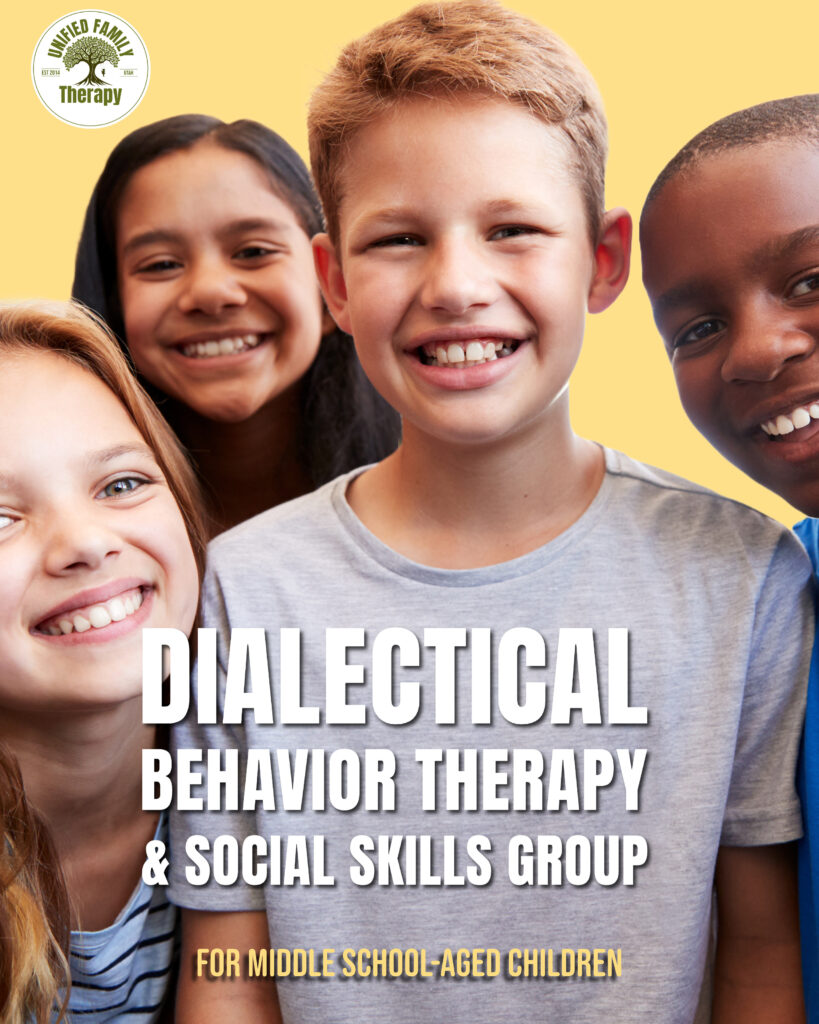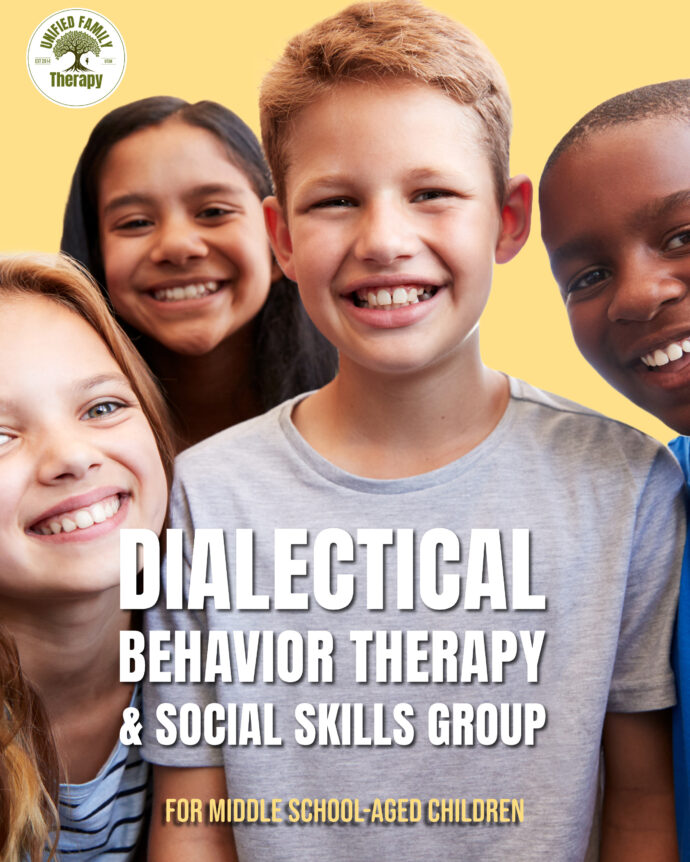
Middle school is a time of big changes—physically, emotionally, and socially. Friendships shift, emotions intensify, and students often feel unsure about how to handle the stress, pressure, and confusion.
However, DBT skills for middle school students offer a practical and empowering solution.
Dialectical Behavior Therapy (DBT) helps kids manage their emotions, build stronger relationships, and gain confidence. A group that focuses on DBT skills for middle school students gives them a chance to connect with peers, practice communication, and develop tools to stay in control during overwhelming moments.
What Is Dialectical Behavior Therapy?
Dr. Marsha Linehan developed DBT to support people who struggle with intense emotions and self-destructive patterns. Over time, therapists adapted it to help teens and preteens who experience anxiety, anger, depression, or social stress.
At its core, DBT teaches radical acceptance—the idea that we can accept things as they are while still working toward change. In other words, students can learn to accept their emotions and still choose how to respond.
Instead of simply being told to “calm down” or “make better choices,” students learn exactly how to do those things—step by step.
Core DBT Skills for Middle School Students
DBT skills for middle school students fall into four key areas. Together, they build a strong foundation for emotional and social well-being:
- Mindfulness – Students learn to focus on the present moment without judgment. This helps them notice thoughts and emotions without becoming overwhelmed.
- Distress Tolerance – These tools help students get through tough moments or intense emotions without making things worse. For example, instead of yelling or shutting down, they learn to pause and cope.
- Emotion Regulation – Students begin to understand their feelings, reduce emotional reactivity, and increase positive experiences.
- Interpersonal Effectiveness – These skills teach students how to set boundaries, speak up for themselves, and maintain respectful relationships.
In group sessions, students actively practice these skills. Through games, role-plays, real-life examples, and guided discussion, they learn how to apply DBT in everyday situations.
As a result, students gain tools they can use at school, at home, and with friends—from calming down after a disagreement to navigating academic pressure or social anxiety. These DBT skills for middle school students become a toolkit they can carry with them into high school and beyond.
Why Social-Emotional Skills Matter in Middle School
Without strong coping skills, students may lash out, withdraw, or internalize their struggles.
In contrast, students who learn emotional regulation and healthy communication are more likely to succeed—in and out of the classroom.
DBT skills for middle school students provide a solid framework for growth. With greater self-awareness and resilience, students can face challenges with more confidence and less fear.
In addition, they develop tools that support long-term mental health and strong, respectful relationships.

